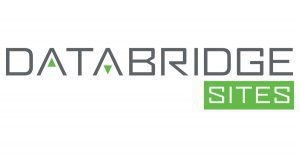
JPM 23 Roundup – 3 Biotechs with Philadelphia Ties Present at JP Morgan Healthcare Conference
Numerous biopharma companies and organizations presented at the JP Morgan Healthcare conference held this week in San Francisco. Three with either headquarters in Philadelphia or ties to the area, were of note for their overview of 2022 and their outlook for 2023 and beyond. Here’s a look at presentations by Amicus Therapeutics, Avantor, and Jazz Pharmaceuticals.
Amicus Therapeutics
Bradley Campbell, president and CEO of Philadelphia-based Amicus Therapeutics presented an overview of the company on Monday, January 9. The company focuses on next-generation therapeutics for people living with rare and orphan diseases. The primary focus was on two drugs, Galafold, on the market for Fabry Disease, and AT-GAA, under regulatory review in several countries for Pompe Disease. Fabry Disease is an inherited lysosomal storage disease, which can cause life-threatening heart and kidney problems. Pompe Disease is an inherited and often fatal lysosomal storage disease that disables the heart and skeletal muscles.
Galafold demonstrated a 12-17% revenue growth in 2022, bringing in $329 million. Amicus is also expecting multiple reviews and launches of AT-GAA this year.
“I think that puts Amicus in a relatively unique position in the mid-cap biotech space with two products with $1.5 to $2 billion peak revenue combined,” Campbell said in the presentation. “All that with a very healthy balance sheet.”
Campbell provided an overview of 2022, which had several milestones. These included Galafold operational revenue growth of 16%, positive long-term data from Phase I/II trials of AT-GAA in Pompe disease, and a positive CHMP opinion for Pombiliti in late-onset Pompe Disease. Pombiliti is a long-term enzyme replacement therapy for use in combination with the enzyme stabilizer miglustat (Janssen’s Zavesca) for late-onset Pompe disease.
The company’s strategic priorities for 2023 are to sustain double-digit Galafold revenue growth of 12-17%, pick up approvals for AT-GAA from the FDA, European Medicines Agency (EMA), and the UK’s Medicines and Healthcare products Regulatory Agency (MHRA) with subsequent launches. It also plans to advance its best-in-class, next-generation Fabry and Pompe pipeline while maintaining a strong path to profitability.
“We think 2023 will be a transformative year for Amicus, and we’re eager to execute across those strategic priorities,” Campbell said.
Avantor
Michael Stubblefield, Radnor, Pa.-based Avantor’s president and CEO presented an overview of the company. The company describes itself as a “leading global provider of mission-critical products and services to customers in the biopharma, healthcare, education and government, and advanced technologies and applied materials industries.” Or as the company and Stubblefield proclaim, “setting science in motion to better the world.”
Stubblefield noted that 85% of the company’s revenue is recurring. Of their business, 55% is related to biopharma, 10% to healthcare, 10% to education and government, and 25% to advanced technology and applied materials. “The similarities are high regulatory oversight and complex development processes,” Stubblefield said, with a “common product portfolio and significant supply chain networks.”
Avantor’s four end markets represent a total addressable market of more than $80 billion. The company operates 30 manufacturing sites, more than 50 distribution locations, and 13 innovation centers. Its organic revenue growth is at 4-6% with about a 37% CAGR from 2019 to 2022 and about 2.5 times growth over the same period. Avantor has almost doubled its laboratory industry growth and demonstrated a “four-fold increase in bioproduction customers compared to a few years ago,” Stubblefield said.
On Monday, January 9, Avantor inked a multi-year supply and services agreement with Somerset, NJ-based Catalent to supply a broad variety of laboratory supplies, clinical and production products, and services.
Stubblefield concluded that Avantor “demonstrated we can execute in a dynamic environment and our core business remains quite strong. As I head into 2023 and beyond, we are well-positioned for continued high levels of performance.”
Jazz Pharmaceuticals
Bruce Cozadd, chairman and CEO of Jazz presented a company overview and strategic vision on January 9. Jazz has corporate headquarters in Dublin, with offices in Philadelphia, Palo Alto and Carlsbad, California, Vancouver, British Columbia, and Mississauga, Ontario.
Cozadd noted that during 2022 Jazz “improved the lives of more patients and had strong topline growth.”
The company focuses on neuroscience and oncology. Its neuroscience portfolio includes Epidiolex, Sativex, Xyrem and Xywav. Its oncology drugs include Defitelio, Rylaze, Vyxeos and Zepzelca. Cozadd said that for 2022, Jazz “will achieve total revenue guidance as well as guidance for both neuroscience and oncology.”
In 2019, the company brought in $2.2 billion in revenue, and expects to hit the 2022 guidance of $3.6-$3.7 billion. They are planning to achieve $5 billion in revenue by 2025. Cozadd noted that “they expect to meet the 2022 target of 60-65% of net product sales from new products. All of this means we have the financial strength to continue to invest in sustainable growth and enhanced value creation.”
Cozadd’s presentation focused largely on the company’s Vision 2025, which has three pillars: commercial, pipeline, and operational excellence.
For their commercial capabilities, Cozadd noted, “We think our capabilities across commercial and R&D, along with our structural flexibility positions us as a partner of choice. We do believe this is a very favorable environment for companies looking to add new and interesting assets.”
In terms of the pipeline, Jazz added three new molecules in 2022 by way of corporate development, filed four Investigational New Drug (IND) applications, and expects “multiple more this year,” according to Cozadd. They also launched seven clinical trials.
For the third pillar, operational excellence, Jazz has $0.9 billion in cash, cash equivalents, and investments, $0.5 billion in an undrawn revolving credit facility, and is expecting several billion in cash flow through 2025.
“With our track record of delivering top- and bottom-line growth; with our focus on excellence; with the investment we’re making across commercial, across R&D, across corporate development, we think we are very well positioned to achieve Vision 2025,” Cozadd said.
- About the Author
- Latest Posts
Mark Terry is a freelance writer, editor, novelist and ghostwriter. He holds a degree in microbiology & public health and spent 18 years in infectious disease research and clinical and research genetics prior to his transition to a writing career. His areas of expertise include biotechnology, pharma, clinical diagnostics, and medical practice management. He has written literally thousands of articles, as well as market research reports, white papers, more than 20 books, and many other written materials. He currently lives in Michigan with his family.








